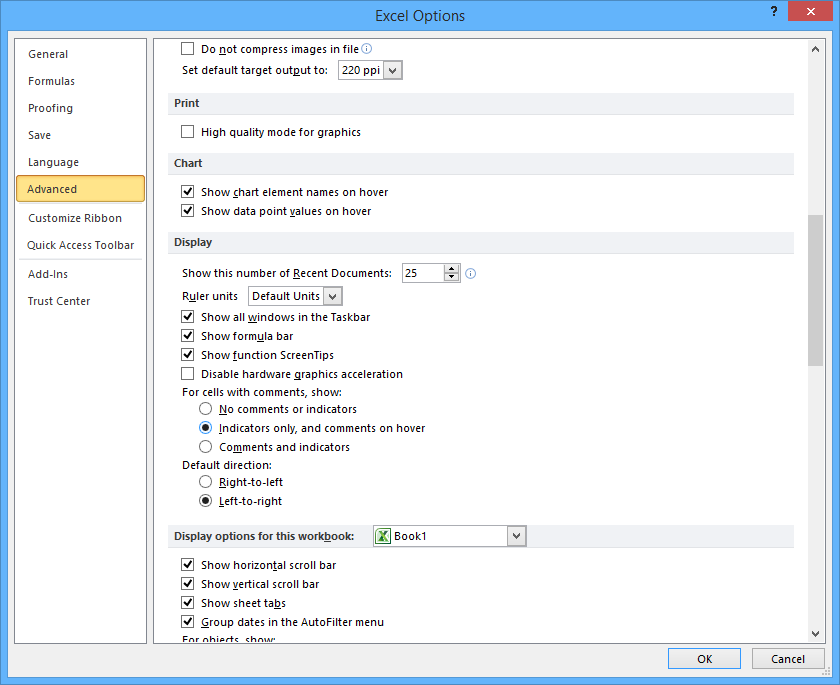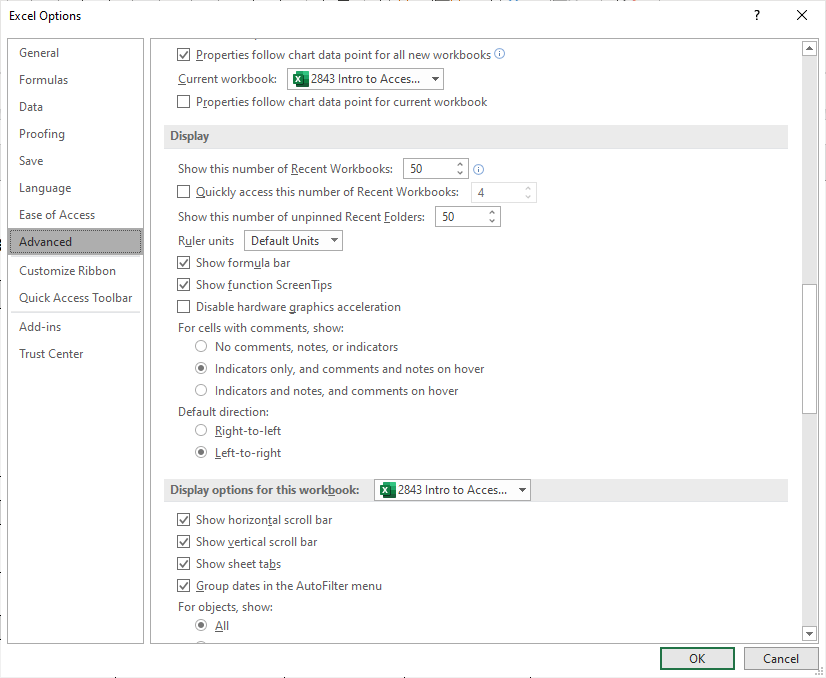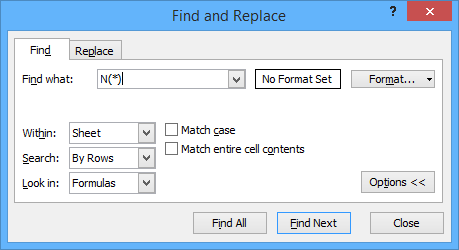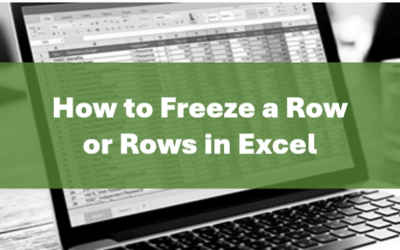Hide Notes and Comments in Microsoft Excel
by Avantix Learning Team | Updated October 17, 2020
Applies to: Microsoft® Excel® 2010, 2013, 2016, 2019 and 365 (Windows)
You can hide comments and notes in Excel workbooks. In addition to adding comments in Excel, there is a little known function called the N function that you can use to enter notes directly within a formula. The N function has been around for a long time so you can use it in older versions of Excel.
Recommended articles: How to Hide Formulas from Clients, Colleagues and Other Users
In Excel 2016, comments changed to threaded comments and the legacy comments became notes. Options for 2016 and later versions are therefore slightly different from earlier versions of Excel. Threaded comments appear with a comment marker as opposed to the traditional red marker. Markers are displayed by default.
Managing the display of comments and indicators
If you are adding comments in Excel, you can specify options as to how you want comments to display in your workbook. By default, when you insert comments in cells, Excel will display indicators as comment markers or red markers in cells with comments.
To control the display of comments and indicators using Excel's Options in Excel 2010 and 2013:
- Click the File tab in the Ribbon and then click Options. The Options dialog box appears.
- Click the Advanced category in the left panel.
- In the right panel, scroll down to the Display section.
- In the area For cells with comments, show, choose the desired option. Check No comments or indicators if you do not want the red markers to display. Check Indicators only, comments on hover to display the red markers. Check Comments and indicators if you wish comments and indicators to display.
- Click OK.
The following Options dialog box appears in 2010 and 2013:
To control the display of comments and indicators using Excel's Options in Excel 2016 and later versions:
- Click the File tab in the Ribbon and then click Options. The Options dialog box appears.
- Click the Advanced category in the left panel.
- In the right panel, scroll down to the Display section.
- In the area For cells with comments, show, choose the desired option.
- Click OK.
The following Opions dialog box appears in Excel 2016 and later versions which includes options for threaded comments and notes (legacy comments):
Showing or hiding all comments using the Review tab
Assuming that you have set the display of comments to show markers and comments on hover, you may want to show all comments when you are working on them and then later hide the comments to display the markers again.
To show or hide all comments using the Ribbon:
- Click the Review tab in the Ribbon.
- Click Show All Comments or Show Comments in the Comments group to show or hide comments (this is a toggle).
In 2016 and later verions, Show Comments displays comments, not notes (legacy comments).
Hiding all comments and indicators using Excel Options
To use Excel Options to hide comments and indicators:
- Click the File tab in the Ribbon and then click Options. An dialog box appears.
- Click the Advanced category in the left panel.
- In the right panel, scroll down to the Display section.
- In the area For cells with comments, show, check the No comments or indicators in 2010 and 2013 or No comments, notes, or indicators in 2016 and later verions.
- Click OK.
This can be very dangerous if you don't know there are comments in a workbook and it's sent to a client or third party with the hidden comments.
Using the N function to enter notes in a formula
You can use the N function to enter notes directly in a formula. Simply enter +N("whatever note you want") at the end of the formula. The text of the note must appear in double quotes ("") and returns a value of 0 so it does not affect the calculation.
The N function has the following syntax:
=N(argument)
For example:
=COUNTA(A1:A900)+N("This sample data set extracted from United Global data 2014")
The N function returns values as follows:
- If the value is or refers to a number, the N function returns the number so in the formula =N(A1) where A1 contains 400, the returned value would be 400.
- If the value is or refers to a date, the function returns the serial number of the date so in the formula =N(A1) where A1 contains 1/1/2014, the returned value would be 41640 or the number of days from the first date in the system.
- If the value is or refers to TRUE, the N function returns 1.
- If the value is or refers to FALSE, the N function returns 0.
- If the value is or refers to an error value the N function returns the error value.
- If the value is or refers to anything else (like a note in quotes) the N function returns 0.
Finding formulas with notes
You can find formulas with notes entered using the N function with the Find command:
- Click the Home tab in the Ribbon.
- Click Find and Select in the Editing group.
- Click Find. Alternatively, you can press Ctrl + F. The Find dialog appears.
- In the Find dialog, enter N( or N(*) in the Find what area.
- Choose to search within the sheet or workbook and to look in formulas.
- Click Find. Continue clicking Find for each instance of a note using the N function. You can also click Find All for a listing of all instances.
You don't normally use the N function in a formula to convert values to numbers because Excel automatically converts values. The N function is provided for compatibility with other spreadsheet programs but also provides an interesting way to enter notes in Excel.
Subscribe to get more articles like this one
Did you find this article helpful? If you would like to receive new articles, join our email list.
More resources
How to Lock Cells in Excel (Protect Formulas and Data)
How to Use Flash Fill in Excel (4 Ways with Shortcuts)
3 Excel Strikethrough Shortcuts to Cross Out Text or Values in Cells
How to Replace Blank Cells in Excel with a Value from the Cell Above
10 Excel Flash Fill Examples (Extract, Combine, Clean and Format Data with Flash Fill)
Related courses
Microsoft Excel: Intermediate/ Advanced
Microsoft Excel: Data Analysis with Functions, Dashboards and What-If Analysis Tools
Microsoft Excel: Visual Basic for Applications (VBA) | Introduction
Microsoft Excel: Introduction to Power Pivot and Power Query Business Intelligence Tools
Our instructor-led courses are delivered in virtual classroom format or at our downtown Toronto location at 18 King Street East, Suite 1400, Toronto, Ontario, Canada (some in-person classroom courses may also be delivered at an alternate downtown Toronto location). Contact us at info@avantixlearning.ca if you'd like to arrange custom instructor-led virtual classroom or onsite training on a date that's convenient for you.
Copyright 2024 Avantix® Learning
You may also like
How to Replace Zeros (0) with Blanks in Excel
There are several strategies to replace zero values (0) with blanks in Excel. If you want to replace zero values in cells with blanks, you can use the Replace command or write a formula to return blanks. However, if you simply want to display blanks instead of zeros, you have two formatting options – create a custom number format or a conditional format.
What is Power Query in Excel?
Power Query in Excel is a powerful data transformation tool that allows you to import data from many different sources and then extract, clean, and transform the data. You will then be able to load the data into Excel or Power BI and perform further data analysis. With Power Query (also known as Get & Transform), you can set up a query once and then refresh it when new data is added. Power Query can import and clean millions of rows of data.
How to Freeze Rows in Excel (One or Multiple Rows)
You can freeze one or more rows in an Excel worksheet using the Freeze Panes command. If you freeze rows containing headings, the headings will appear when you scroll down. You can freeze columns as well so when you scroll to the right columns will be frozen.
Microsoft, the Microsoft logo, Microsoft Office and related Microsoft applications and logos are registered trademarks of Microsoft Corporation in Canada, US and other countries. All other trademarks are the property of the registered owners.
Avantix Learning |18 King Street East, Suite 1400, Toronto, Ontario, Canada M5C 1C4 | Contact us at info@avantixlearning.ca












